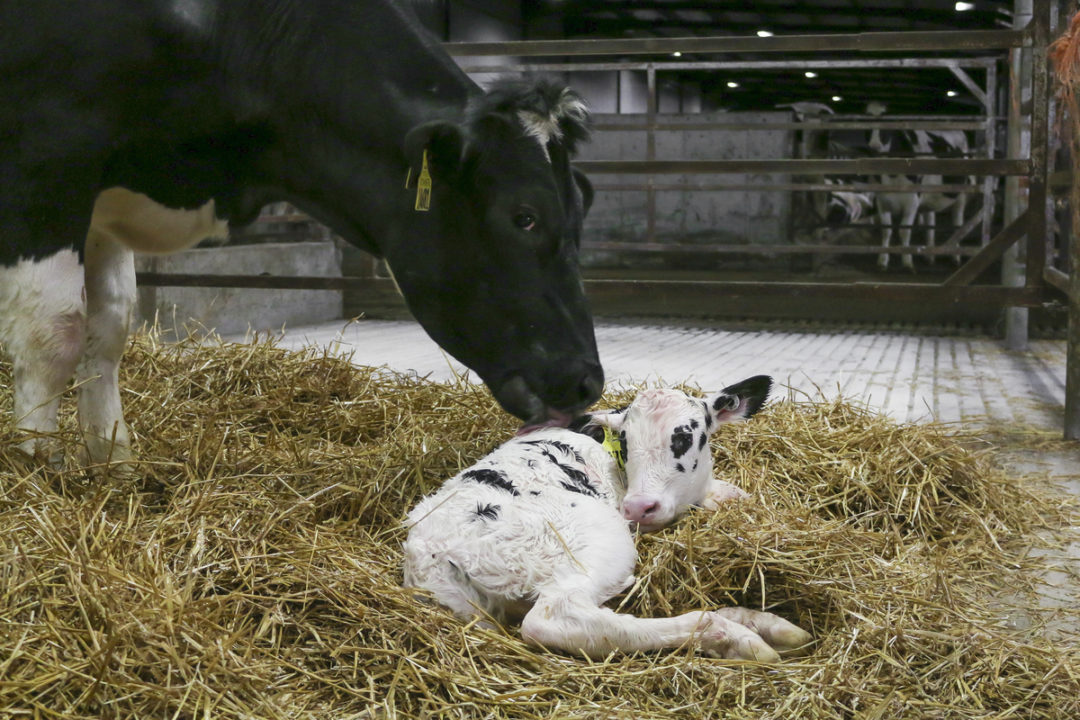Extensive work has centered around how blood calcium concentrations fluctuate around calving and how this affects the long-term health and productivity of the dairy cow. Research has focused on both prepartum and postpartum methods to help ensure “ideal” blood calcium concentrations around calving. There has been much discussion – and research – regarding what the ideal blood calcium concentration is, what day to measure blood calcium, and what health and production traits are best to associate with this ideal blood calcium concentration. Further, many nutrition and management strategies are often investigated in order to provide adequate feedback to farmers and nutritionists on how to ensure their cows are set up to have the most ideal calcium homeostasis as she approaches parturition. Our laboratory has been focused on understanding what the dairy cow’s normal calcium metabolism looks like during different stages of her productive life, and we can provide insight to help improve current calcium management practices.
As we all know, the mammary gland is a very demanding organ. Milk synthesis and secretion results in an increased demand on the cow’s body, especially for calcium. During lactation, the mammary gland is responsible for coordinating maternal metabolism in tandem with making copious amounts of milk. This coordination of calcium metabolism is regulated via negative feedback mechanisms. Therefore, to “turn on” calcium homeostatic mechanisms in the transition cow, transient hypocalcemia is necessary. Additionally, compensatory mechanisms are stimulated during lactation to help in aiding the maintenance of calcium during the transition period. We have demonstrated that early lactation dairy cows mount a robust counter-response to being challenged with subclinical hypocalcemia (via a calcium chelating agent), while non-pregnant, non-lactating counterparts did not. Work in our laboratory has also demonstrated that circulating and mammary serotonin concentrations are increased in lactating dairy cows compared to non-pregnant, non-lactating dairy cows. Further, multiple studies in different labs have observed that serotonin is associated with improved postpartum calcium concentrations. Interestingly, treatment with a serotonin precursor triggers improved blood calcium concentrations by triggering a transient hypocalcemia. Transient hypocalcemia occurs to trigger the ability of the cow to stimulate increased dietary calcium absorption in the gut, increased calcium resorption in the kidneys to prevent calcium excretion in the urine and increased calcium resorption by the bone to stimulate calcium release from the bone.
An additional study in our laboratory that has not yet been published observed that dairy cows given IV calcium gluconate continuously after calving for 24 hours exhibited a dramatic decrease in blood calcium concentrations upon termination of calcium gluconate infusion. This observation supports the concept that cows which have just calved must undergo a transient hypocalcemia to stimulate negative feedback and activate calcium homeostatic mechanisms. In a larger study conducted by Dr. Jessica McArt at Cornell University, she observed that cows which underwent a transient hypocalcemia during the first 24 hours postpartum and then increased their calcium concentrations by 48 hours produced the most milk over the course of their lactation. This larger epidemiological-level study supported the findings in our intensive physiological study, indicating that regardless of intervention at calving, dairy cows need to – and still will – undergo transient hypocalcemia, just delayed. The epidemiological evidence supporting the increase in milk production from Dr. McArt’s study suggests this is a critical piece for milk production and lactation.
Our current approach to hypocalcemic mitigation in the transition cow is careful management of dry cow nutrition (low-potassium diets, negative DCAD, zeolite clays) to prevent post-calving issues and thoughtful considerations on housing of dry cows to reduce social stresses. Research suggests that unless a cow presents as sick or lame, was known to have issues in a previous lactation or an older-parity, high-producing cow, there is no need to analyze blood calcium concentrations until 36 to 48 hours postpartum. Additionally, research has indicated that intravenous calcium infusion severely disrupts blood calcium concentrations in the hours following infusion, and more research on negative repercussions of such large changes in blood calcium in the 24 hours immediately after calving needs to be studied to determine milk yield and long-term health repercussions.







